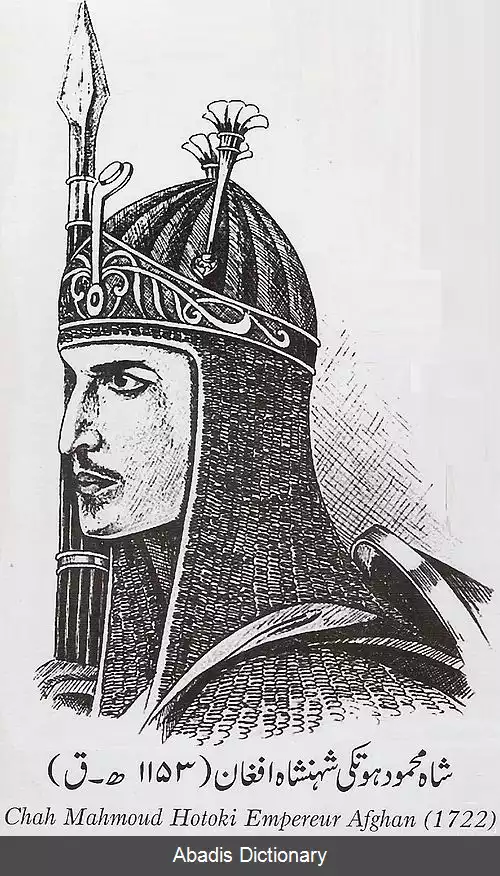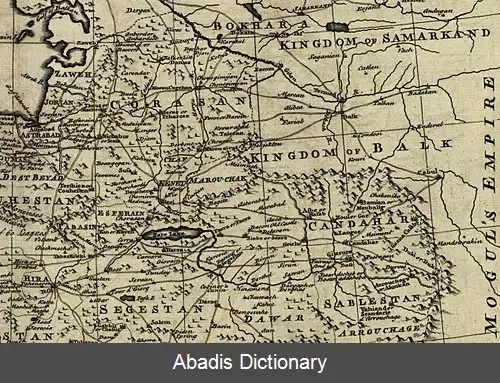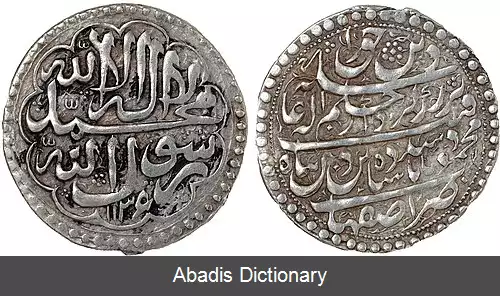محمود هوتکی ( ۱۶۹۷ – ۲۲ آوریل ۱۷۲۵ ) که در ایران به محمود افغان معروف است، سومین فرمانروای دودمان هوتکی بود که دودمان صفویان را سرنگون کرد و از ۱۷۲۲ میلادی تا زمان مرگش در ۱۷۲۵ شاه ایران شد. [ ۲]
او پسر ارشد میرویس خان هوتک، رئیس طایفهٔ غلجی قوم پشتون بود. پدرش میرویس خان، در سال ۱۷۰۹ میلادی قندهار را از سلطه ایران صفوی بیرون کشید. [ ۳]
پس از مرگ میرویس هوتک در سال ۱۷۱۵، برادرش عبدالعزیز هوتک به قدرت رسید. محمود با مغلوب کردن عموی خود در سن ۱۸ سالگی تاج و تخت را گرفته و پادشاه جدید دودمان هوتکی شد. [ ۴] [ ۵] [ ۶]
محمود جوان که اراده کشورگشایی را داشت، حمله علیه ایران صفوی را آغاز نمود. او ابتدا سلطنت سدوزایی هرات را در سال ۱۷۲۰ سرنگون کرد و سپس به کرمان لشکر کشیده و آنجا را تصرف نمود. در سال ۱۷۲۲ محمود لشکری ۲۰٫۰۰۰ نفری ترتیب داده و از راه سیستان، کرمان و یزد سوی اصفهان لشکر کشید. او لشکر مجهز صفوی را در نبرد گلون آباد شکست داده و اصفهان را محاصره نمود.
در طول محاصره اصفهان توسط محمود، وی به دلیل نداشتن توپخانه، مجبور شد به محاصرهٔ طولانی مدت متوسل شود به این امید که ایرانیان را به گرسنگی کشانده و ناچار به تسلیم گرداند. بالاخره محمود اصفهان را گشود، شاه سلطان حسین صفوی سلطنت و تاج خود را به او تقدیم کرد و یک دختر و یک خواهرش را به عقد محمود داد. [ ۷]
محمود در همان روزهای آغازین حکومت خود، خیرخواهی از خود نشان داد، با خانوادهٔ سلطنتی اسیر به خوبی رفتار کرد و مواد غذایی را به اصفهان گرسنه آورد. اما زمانی که پسر حسین، تهماسب دوم خود را شاه اعلام کرد، محمود لشکری به سوی پایگاه تهماسب، قزوین فرستاد. تهماسب فرار کرد و پشتون ها شهر را تصرف کردند، اما مردم، که از برخورد ارتش فاتح با آن ها شوکه شده بودند، در ژانویهٔ ۱۷۲۳ علیه آن ها قیام کردند. این شورش موفقیت آمیز بود و سربازان زنده مانده به اصفهان بازگشتند و خبر شکست را به محمود دادند. محمود که از بیماری های روانی رنج می برد و از شورش رعایا می ترسید، وزیران و بزرگان پارسی خود را به بهانه های واهی به جلسه ای دعوت کرد و آن ها را سلاخی کرد. او همچنین تا ۳۰۰۰ نفر از نگهبانان سلطنتی ایران را اعدام کرد. در همان زمان، رقبای سرسخت ایرانی، عثمانی ها و روس ها از هرج و مرج در ایران استفاده کردند و زمین هایی را برای خود تصرف کردند و مقدار قلمروی تحت کنترل محمود را محدود کردند. [ ۸]


این نوشته برگرفته از سایت ویکی پدیا می باشد، اگر نادرست یا توهین آمیز است، لطفا گزارش دهید: گزارش تخلفاو پسر ارشد میرویس خان هوتک، رئیس طایفهٔ غلجی قوم پشتون بود. پدرش میرویس خان، در سال ۱۷۰۹ میلادی قندهار را از سلطه ایران صفوی بیرون کشید. [ ۳]
پس از مرگ میرویس هوتک در سال ۱۷۱۵، برادرش عبدالعزیز هوتک به قدرت رسید. محمود با مغلوب کردن عموی خود در سن ۱۸ سالگی تاج و تخت را گرفته و پادشاه جدید دودمان هوتکی شد. [ ۴] [ ۵] [ ۶]
محمود جوان که اراده کشورگشایی را داشت، حمله علیه ایران صفوی را آغاز نمود. او ابتدا سلطنت سدوزایی هرات را در سال ۱۷۲۰ سرنگون کرد و سپس به کرمان لشکر کشیده و آنجا را تصرف نمود. در سال ۱۷۲۲ محمود لشکری ۲۰٫۰۰۰ نفری ترتیب داده و از راه سیستان، کرمان و یزد سوی اصفهان لشکر کشید. او لشکر مجهز صفوی را در نبرد گلون آباد شکست داده و اصفهان را محاصره نمود.
در طول محاصره اصفهان توسط محمود، وی به دلیل نداشتن توپخانه، مجبور شد به محاصرهٔ طولانی مدت متوسل شود به این امید که ایرانیان را به گرسنگی کشانده و ناچار به تسلیم گرداند. بالاخره محمود اصفهان را گشود، شاه سلطان حسین صفوی سلطنت و تاج خود را به او تقدیم کرد و یک دختر و یک خواهرش را به عقد محمود داد. [ ۷]
محمود در همان روزهای آغازین حکومت خود، خیرخواهی از خود نشان داد، با خانوادهٔ سلطنتی اسیر به خوبی رفتار کرد و مواد غذایی را به اصفهان گرسنه آورد. اما زمانی که پسر حسین، تهماسب دوم خود را شاه اعلام کرد، محمود لشکری به سوی پایگاه تهماسب، قزوین فرستاد. تهماسب فرار کرد و پشتون ها شهر را تصرف کردند، اما مردم، که از برخورد ارتش فاتح با آن ها شوکه شده بودند، در ژانویهٔ ۱۷۲۳ علیه آن ها قیام کردند. این شورش موفقیت آمیز بود و سربازان زنده مانده به اصفهان بازگشتند و خبر شکست را به محمود دادند. محمود که از بیماری های روانی رنج می برد و از شورش رعایا می ترسید، وزیران و بزرگان پارسی خود را به بهانه های واهی به جلسه ای دعوت کرد و آن ها را سلاخی کرد. او همچنین تا ۳۰۰۰ نفر از نگهبانان سلطنتی ایران را اعدام کرد. در همان زمان، رقبای سرسخت ایرانی، عثمانی ها و روس ها از هرج و مرج در ایران استفاده کردند و زمین هایی را برای خود تصرف کردند و مقدار قلمروی تحت کنترل محمود را محدود کردند. [ ۸]



wiki: محمود هوتکی
